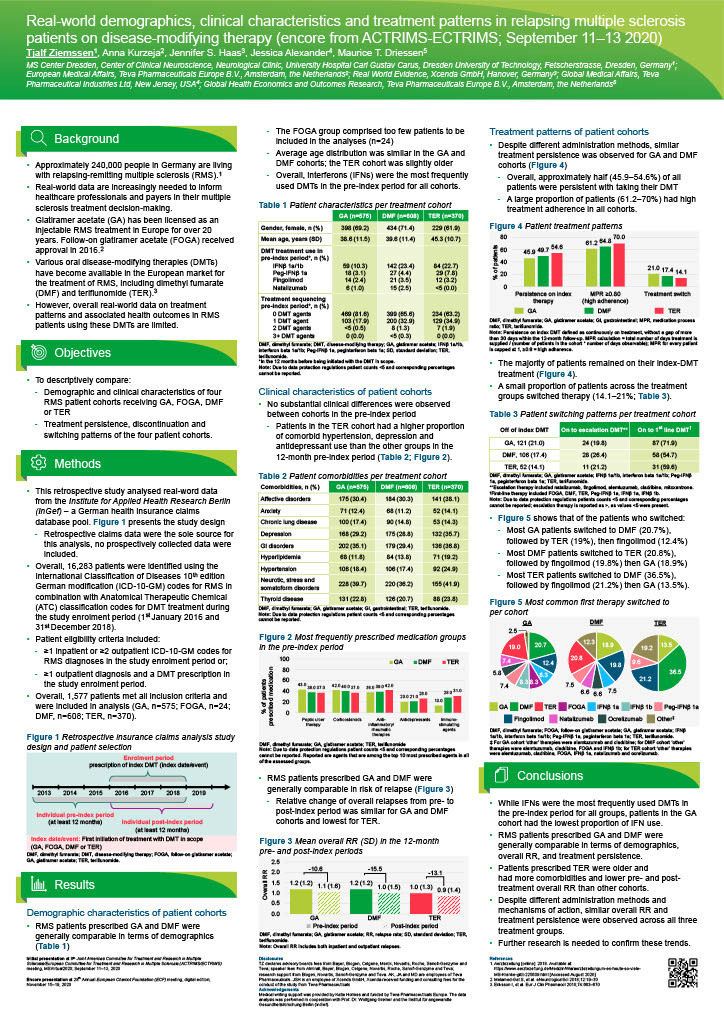Real-world demographics, clinical characteristics and treatment patterns in relapsing multiple sclerosis patients on disease-modifying therapy (encore abstract from ACTRIMS/ECTRIMS)
Abstract
Approximately 240000 people in Germany are living with relapsing multiple sclerosis (RMS). In Germany, commonly used injectable, infusion and oral disease-modifying therapies (DMTs) for RMS are glatiramer acetate (GA), follow-on GA (FOGA), dimethyl fumarate (DMF) and teriflunomide (TER).
We evaluated patient demographics, clinical characteristics and treatment patterns (switching/discontinuation) among RMS patients on these DMTs.
This was a retrospective claims database analysis using data from the Institute for Applied Health Research Berlin database. International Classification of Diseases and Anatomical Therapeutic Chemical Classification system codes were used to identify RMS patients, in the index period 1 Jan 2016 to 31 Dec 2018. Eligible patients had: ≥1 inpatient RMS diagnosis and/or ≥2 outpatient or ≥1 outpatient diagnosis and a DMT prescription in the enrolment period. Patients naïve for the respective DMT, was defined by a 12-month prescription-free period (pre-initiation).
Of 16283 patients with RMS; 1577 patients met all inclusion criteria (GA, n=575; FOGA, n=24; DMF, n=608; TER, n=370). The FOGA group was too small for further analyses. Patients in the TER group were older and had a higher proportion of comorbid hypertension, depression and antidepressant use versus other groups. No other substantial demographic differences were observed. Pre-index mean annualised relapse rate (ARR) was 1.18 for GA, 1.18 for DMF and 0.99 for TER; post-index mean ARR (12 months post-initiation) was 1.05 for GA, 1.00 for DMF and 0.86 TER. 12 months postinitiation, DMT persistence was 45.9% for GA, 49.7% for DMF and 54.6% for TER; switch rates were 21.0% for GA, 17.4% for DMF and 14.1% for TER.
GA and DMF patients were generally comparable in demographics, measures of disease activity, and treatment persistence. Despite different administration methods and mechanisms of action, similar September 2020 ARR and treatment persistence were observed. In contrast, TER patients were older and exhibited more comorbidities and lower pre-/post-treatment ARR.

